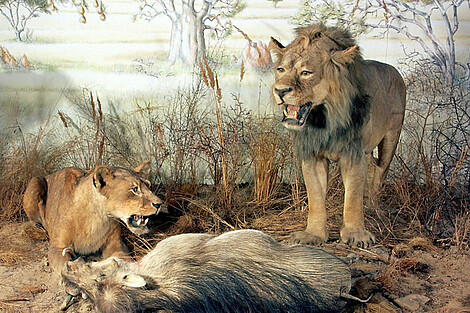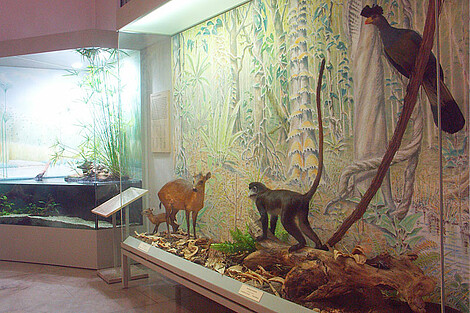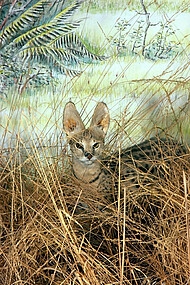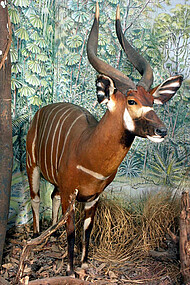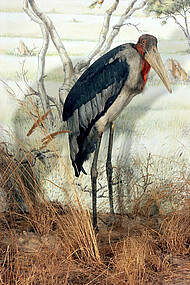The African continent is defined by three particular kinds of landscapes, which are depicted in our permanent exhibition: the desert, the savannah and the tropical rain forest. The Sahara, the world's largest desert, extends from the Atlantic to the Red Sea, and every year it continues to spread towards the Mediterranean and the belt known as the Sahel. In southern Africa, the Namib desert and the semi-arid regions of Karoo and Kalahari cover large expanses. The animals that live here include the desert jerboa (Jaculus) and a desert fox known as the fennec (Vulpes zerda).
Tropical deserts are often bordered by savannahs. These are grassy regions which receive more precipitation than deserts, but less than tropical forests. Our diorama presents the "king of savannah" – a pair of lions.
From the Congo basin to western Africa, there are tropic lowland rain forests wherever the climate is warm and humid all year or where the dry season is very short. The otter shrew (Potamogalinae) and red-tailed monkey (Cercopithecus ascanius) have habitats here.
Our exhibition also features live animals. Here you can watch uromastyx lizards.
One particularly interesting specimen is the lungfish (Dipnoi), which can be seen here in an aquarium. Its native habitat in Africa is dry regions, and the bodies of water in which it lives dry out from time to time. At the beginning of the dry season, this fish burrows into the mud and survives there in a chamber of mucus and soil it builds for itself.





